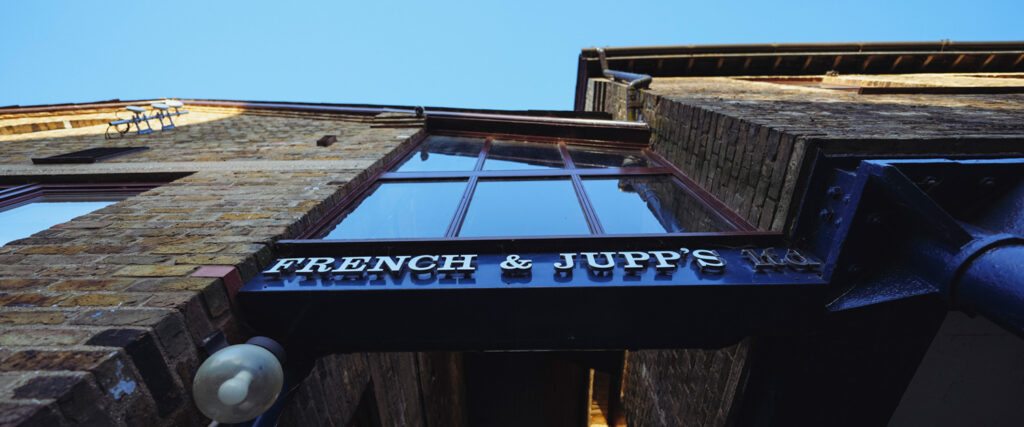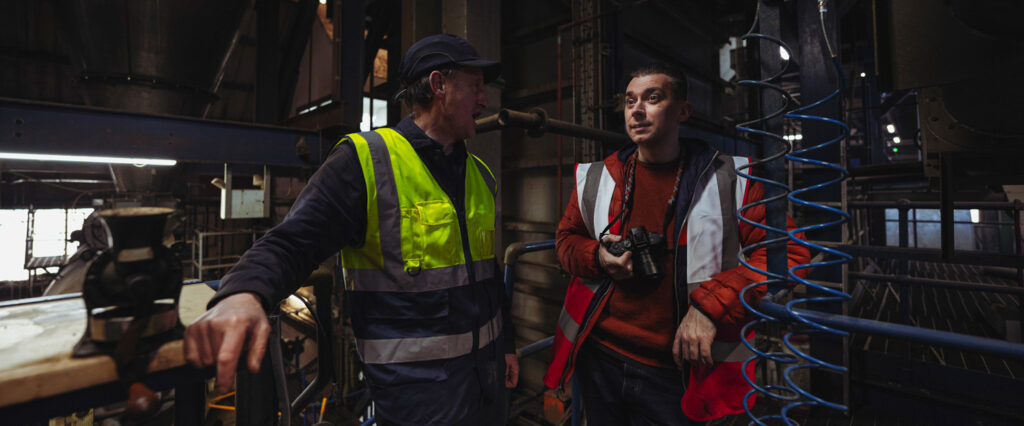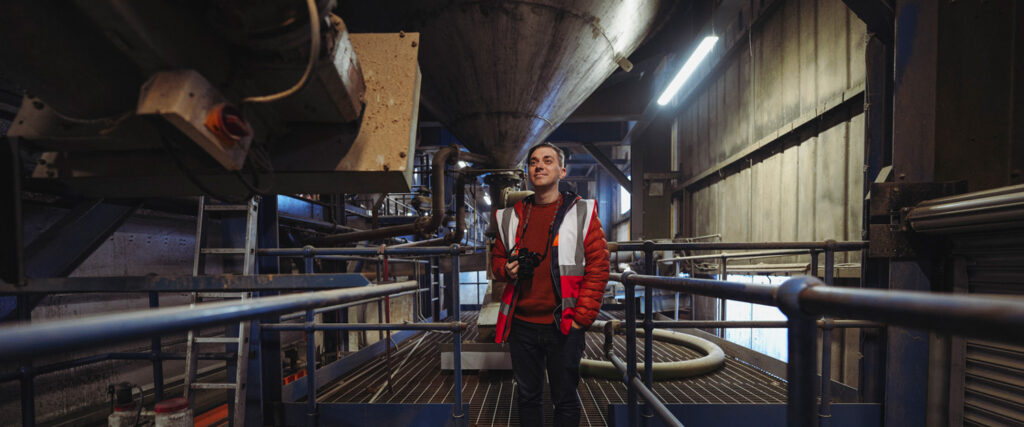A Taste of History at French and Jupps Maltings, Stanstead Abbotts, Hertfordshire

There’s a good chance you might not have heard of a British malt producer called French and Jupps. And I’ll admit that until very recently, I hadn’t either. It might surprise you to learn that, not only is it the oldest maltings still operating in the UK today, but both you and I have almost certainly enjoyed beers made with their products many times over, and without doubt will do so again.
Rather than kilned malted barley such as pilsner or pale malt, which makes up the bulk of malt bills in the vast majority of beer recipes, French and Jupps exclusively produces crystal and patent roasted barley malt. These can range from Crystal and Cara Gold malts, used primarily to build body and sweetness in a beer through the addition of complex, long-chain sugars, to Brown, Black and Chocolate malts, which can add an incredible depth of flavour and colour to recipes they’re used in.
The reason this maltings has remained somewhat anonymous, even to barley enthusiasts such as myself for so long, is because in recent times it has been supplying its specialty malts to other malt producers, where they were typically repackaged. More recently, however, they have begun selling direct, including via Get ‘Er Brewed, which means they will likely not remain as unknown within certain corners of the beer industry as they have been for much longer. Judging by what I saw and experienced when I visited the malthouse with the Get ‘Er Brewed team last month, I consider that they deserve to be a household (at least in terms of the brewhouse) name.
My journey down to London was without incident, an on-time train being a rare treat these days. This gave me plenty of time to make my way to Tottenham Hale (where I used to spend an inordinate amount of time visiting the Beavertown and Pressure Drop brewery taprooms in my former life as a Londoner). Here I jumped on a train heading north towards Stanstead St. Margarets, one of a pair of villages either side of the River Lea that French & Jupps has called home since 1864.
Once I had reached my final destination and liaised with the rest of the team from Get ‘Er Brewed, we did what we felt was best and immediately headed over the road to the Jolly Fisherman for a pint. This quaint, traditional countryside pub is among 130 managed houses operated by McMullen’s, a generational family brewery that has been operating in nearby Hertford since 1827. We ordered pints of its AK Mild, which is burnished copper in colour and topped with a rocky, off-white head of foam. It’s slightly sweet to taste at first, but with a dry, prickly finish from hops making it oh-so-moreish.

No sooner than we had taken and contemplated our first sips, we were met by our hosts for the day: David Jupp, former managing director and now chair at the maltings, and Paul King, a brewer with over 30 years of experience in some of the worlds largest breweries, who took on the role of MD when David retired in 2020. Over lunch we learned how David’s family have been involved in farming and malting business since the late 17th century and by continuing as chair extends his families involvement in the malting business to over 330 years.
With both our appetite and thirst sated, we crossed the River Lea, where the village of Stanstead St Margarets ends, and Stanstead Abbotts begins. When the site was originally acquired by the Jupp family in the 19th century, there was a maltings on either side of the river. The River Mead maltings would have been located right behind where we had lunch at the Jolly Sailor, the Rose and Crown Maltings just over the river are the buildings still in use today.
There’s a hint of serenity in the air as we cross the yard at the front of the malthouse. Sunlight breaks through the February sky bringing with it the promise of spring, and the air around us is rich with the bitter scent of roasting barley. The local ducks and geese haven’t missed a trick either, as they waddle around the yard getting fat on scattered grains that spilled over from the production plant. I can feel myself drifting off into thought when suddenly the calmness is broken by articulated lorry shunting back and forth, in an effort to even its heavy grain load.
Crossing the yard into the main section of the maltings, Paul leads us on a tour of the production facility. A huge tin shed of a building, there’s an otherworldly, almost cinematic feel to the place, as light breaks through the window and illuminates barley dust suspended in the air. As we enter we are shown four vast steep tanks. Here is where the raw barley grains are hydrated, and then allowed to germinate so that the malting process can begin. A kernel of barley is a latent source of sugar and enzymes, but these can only be accessed when the grain is allowed to begin germination, so that the starches within can gradually be converted into the sugars necessary for making beer.
Once the germination process is complete, most maltings would then kiln their grain to remove the rootlets, and produce the base malts that go into the majority of grain bills. With French and Jupps only producing crystal and patent malts, the focus here turns immediately to roasting, and you can already hear the roar and feel the heat of the furnaces as you approach the roasting drums on the opposite side of the production building.

Up a metal staircase between the steeping tanks and the roasting drums, is the control room. With its large, vintage computer consoles, set with large, colourful buttons and dials there’s almost a feeling as though you’re on a movie set depicting an Eastern Bloc nuclear reactor. French and Jupps could have updated this equipment years ago, but they didn’t for a simple reason: to maintain a level of human control over the roasting process.
Like brewing, roasting malt is very much a “hurry up and wait” process. Everything moves slowly, until it doesn’t, and then it’s a constant dash between the roaster and the control room as a batch of malt is finely dialled in by eye, and hand. I watch as someone rushes back and forth with samples, milling them in a handheld coffee grinder and pouring them into a lightbox next to a control sample. Although much of the process is mechanised, this final process demonstrates that roasting malt, here at French and Jupps, is still a genuine craft.
Our tour continues through buildings that once upon a time would have been traditional floor maltings, but are now used for storage and packaging. We end up in a large unit that houses the maltings offices and laboratory. Inside is a network of stairs and small rooms, many of which have been converted into units to let, and are mostly used by a variety of small, local businesses, from beauticians, to professional shoe cleaners.
Before we leave we pass a packaging room, where 25kg sacks of malt are being filled and then stitched closed by a contraption that looks like it’s far older than I am. Another manual process that, while laborious, demonstrates a certain level and care and precision that I saw throughout each step of production at the maltings. When I made my way here to visit I might not have known a great deal about French and Jupps, or their long history. As I left, I found myself eager to taste the results of the hard work I’d just witnessed, and so, diligently, we headed back to the pub.
— Matthew Curtis
Check out all the French & Jupps malts HERE